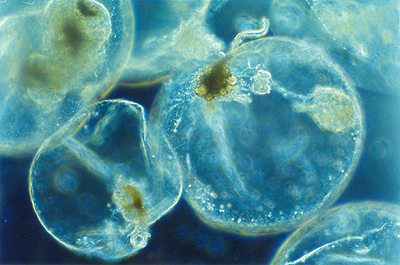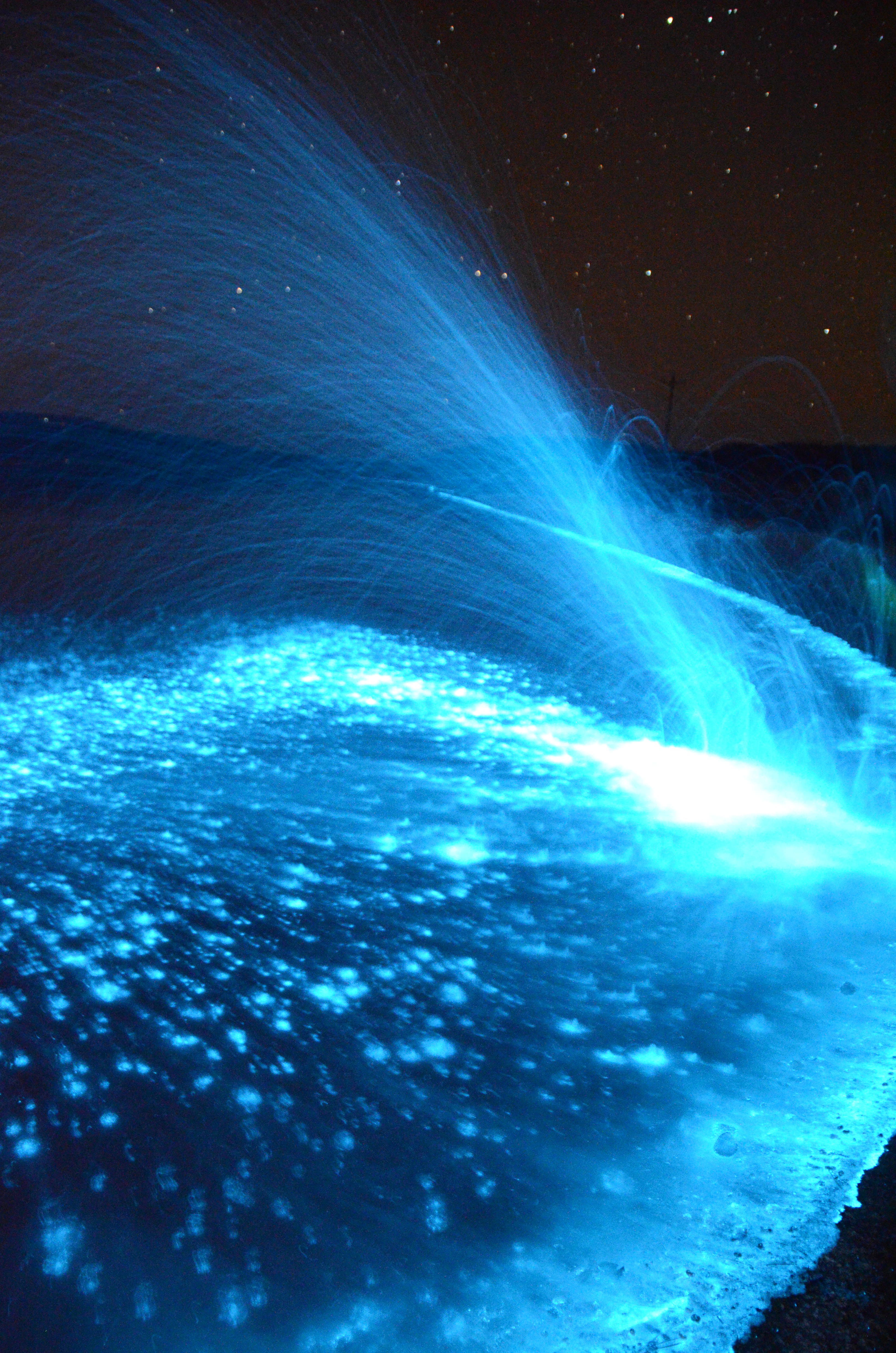Phytoplankton put on a stunning show of bioluminescence at South Arm in Tasmania, turning the beach blue for kilometres, glowing and flashing.

So there you are, trying to take some pictures of the Aurora Australis, and there’s too much light. When there shouldn’t be. Blue light.
If you jumped to the conclusion that this was an alien invasion, you probably like science fiction. You’d also be right. But the aliens are from Earth, appearing in a place they don’t belong. However, they’re happily making it their home. Jellyfish expert Lisa-Anne Gershwin was in the right place at the right time to identify what was happening.
It’s a dinoflagellate called Noctiluca scintillans (which actually means ‘sparkling night’ in Latin). They’re phytoplankton – single-celled creatures, not strictly an animal, not exactly a plant. Seen separately, they look like tiny colourless lily-pads. But when the conditions are right, they look like something else altogether. Sometimes they bloom – countless tiny creatures, all massed together.
Up close and personal with Noctiluca scintillans, commonly known as ‘sea sparkle’.
This was what the Aurora Australis photographers saw. All it takes is a good rain, which washes nutrients into the coastal water, combined with a gentle wind to concentrate these tiny creatures into a mass.
These blooms are almost certainly more common than we know, but most go unnoticed because they occur away from places where humans are likely to see them.
They make their own light, using a chemical reaction. Bioluminescence is found in almost every phylum, with different sorts of creatures having different colours of light, and using it for different purposes. It can be a startling effect to would-be predators, a warning to others, a call for help, or a way to recognise a potential mate. In this particular case it’s probably a startling effect, simply because the other explanations indicate greater cognitive function than is likely in single-celled creatures.
A kick gives a lightshow
At South Arm in Tasmania, where a recent bloom occurred, the beach was blue for kilometres in both directions, glowing and flashing for most of the night. A band 1-2m wide along the beach was glowing quite brightly, and with each lapping wavelet it flashed a brilliant blue. The wave wash on the sand left behind a bed of twinkles.
Dipping your hand in it gave the skin an eerie Avatar-like appearance. A handful of sand thrown into the water elicited a brilliant flash of dots. And a piece of seaweed dipped into the water then flicked produced an amazing arc of light followed by an explosion of light when they hit the water. A kick of the water gave a similar arc and explosion, but even more brightly.
Sounds beautiful, doesn’t it? And it was, except here comes the ‘but’.
They’re an introduced species, penetrating the Southern Ocean, and they’re notorious for fish kills.
The majority of dinoflagellates are more plant-like than animal-like: they photosynthesise. Noctiluca doesn’t. Because it has no chloroplasts, it has to get food the old fashioned way, by eating something else. Mainly the ‘something else’ is other phytoplankton, but has been known to eat copepods (small crustaceans) and even occasionally tiny fish fry. Adjusted for scale, this is the equivalent of a human being eaten by a clam.
It’s been implicated in the decline of fisheries in other areas. Although it does not appear to be toxic itself, it accumulates and excretes high levels of ammonia into the surrounding area while it’s gorging itself on phytoplankton.
So, not all good. But it’s so beautiful, all we can say is…




